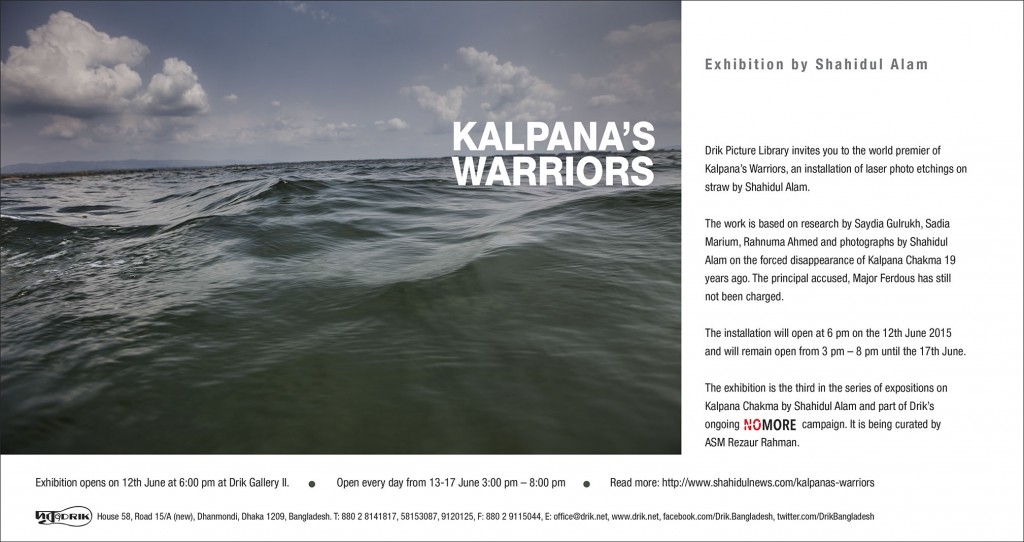
Press release
German Foreign Office and Neue Galerie Berlin will present Shahidul Alam at Deutsche Welle?s Global Media Forum and at the Global Forum on Migration and Development in Berlin.
With the book publication and the exhibition ?The best years of my life. Bangladeshi Migrants in Malaysia? the international well-known photographer and activist Shahidul Alam will be present on Monday, June 19, 2017 through the Neue Galerie Berlin and with the support of the German Foreign Office on the Global Media Forum of the Deutsche Welle. After the end of the forum in Bonn, the exhibition will be on display at the German Foreign Office in Berlin from Thursday, June 23, 2017, and will be part of the Global Forum on Migration and Development from 28 to 30 June. The Finissage will be published on 30 June 2017 at the Federal Foreign Office with a greeting from the State Secretary Dr. Markus Ederer within the framework of the GFMD. The artist will be present in Bonn and Berlin and will be available for questions and interviews. Further information on the exhibition and the artist in the appendix.
As an additional digital component, the Neue Galerie Berlin, together with the technology partner snap2live, presents the newly developed image recognition app ?Neue Galerie Berlin?. All pictures of the Alam exhibition can be scanned with the app (tentatively available on Android). Behind the pictures
About
In 2016 Tanja von Unger founded the Neue Galerie Berlin (www.neuegalerieberlin.de).
To provide a relevant platform beyond photography the businessmodel
also collaborates with publishing groups and institutions and is known for its groundbreaking presentation of photographers and their works at economic conferences and events such as the Economic Summit of the Su?ddeutsche Zeitung, Falling Walls Conference, Rheingauer Economic Forum, Global Solutions G 20 Conference of the Dieter von Holtzbrinck publishers.
Snap2Life create apps for companies in the media, publishing, automotive, business, sports and advertising sectors. Most of these apps are equipped with our innovative image recognition functionality, which we also provide as an API for integration into other apps. In a fraction of seconds we connect the offline world with any kind of relevant content from the online world.
The Deutsche Welle Global Media Forum (GMF) is the Place Made for Minds, where decision makers and influencers from all over the world come together. It?s the global platform put on by Deutsche Welle and its partners and the place where you can connect and strengthen relations with over 2,000 inspiring representatives from the fields of journalism, digital media, politics, culture, business, development, academia and civil society. The conference provides a unique opportunity to network, get inspired and collaborate using a wide variety of state-of-the-art formats.
http://www.dw.com/en/global-media-forum/global-media-forum/s-101219
?Towards a Global Social Contract on Migration and Development?
Tenth Global Forum on Migration and Development Summit 28 to 30 June 2017, Berlin
Germany and Morocco have assumed the co-chairmanship of the Global Forum on Migration and Development (GFMD) from 1 January 2017 until 31 December 2018. During this two-year period, the focus will be on the contribution of the GFMD to the United Nations? Global Compact on Migration. The Compact is intended to constitute a strong signal of the international community for an enhanced global migration policy, to be adopted by the community of states in 2018.
https://gfmd.org
Category: Governance
RESISTING RAMPAL
‘Go back NTPC, get out India’
rahnuma ahmed
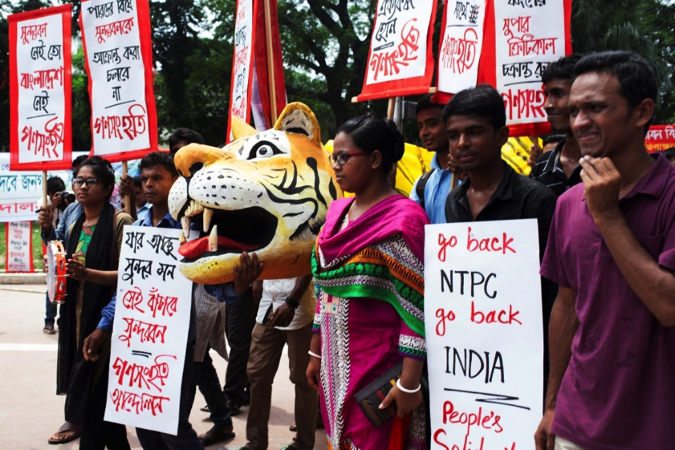
Of all the slogans raised in protest against the coal power plant being built at Rampal in Bagerhat, this one’s the best. Continue reading “RESISTING RAMPAL”
Why Biman Fails
The long queue outside is nowadays usual. But I was unperturbed. I had come in early and there were the Hajj passengers to photograph. The cat strolling through the airport was somewhat amusing. A man, who could have been Chinese, gave it some food. The cat knew his way around the place. I had found cat pooh on several occasions before, but now I had the source file!
Alarm bells should have rung when I found no notice of the flight on the electronic board. The lack of people at the Biman counter was a bigger case for alarm. My friend Porimol, a journalist from the Daily Star, who was also going to Kathmandu was in the queue. At least I was in the right place! It could have just been “Biman Time” I convinced myself. When no one had turned up by 10:00 am, we all went off to the Biman Sales counter. At least there was a Biman employee there. “We have had nothing official” they said, but hear that the flight might be cancelled. They had no arrangements for rerouting, or any other arrangement. Their excuse for not letting passengers know had some logic. Since they themselves hadn’t been told, what could they tell us?
HUMAN CHAIN: Protest against the murder of Photographer and Drik Employee 'Irfanul Islam'
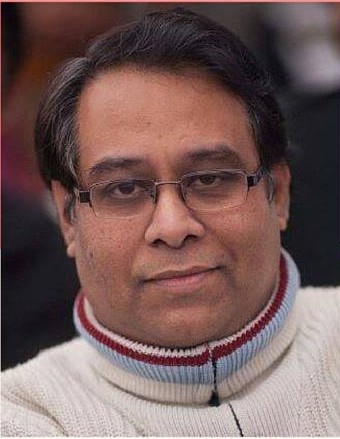
????? ?????????
??? ????????? ? ?????????? ??? ??????? ????? ?????? ????????? ?????????
????? ? ??????, ????
??? ????????? ? ?????????? ??? ??????? ????? ?????? ????????? ??? ?????? ????????? ??????? ? ??????? ???? ?????? ?????? ?????????? ??? ??????? ???? ??????????????? ??.??.??. ???? ?????????? ????? ? ?????? ???? ??????, ????? ?:?? ?????? ????????? ??????????? ????? ??????
?????????? ???????????? ????????? ???? ???? ????? ??? ?????????????? ???? ????? ??? ????????? ??????????? ???????? ??????
???? ?????????? ??????? ???? ????? ????????? ?????? ?????
??? ? ???????? ?????
????? ?????? ?????
??????? ?????????, ???
????????
????? ????????- ???????????
?????- surobip@gmail.com
Dear All,
Drik Picture Library and Pathshala South Asian Media Institute will initiate to form a Human chain at T.S.C, Dhaka University on 9th?April, 2016,?Saturday?at?3.30pm?for the protest against the murder of Photographer and Drik Employee ?Irfanul Islam? who was kidnapped and murdered on 2 April, 2016. Photographers will wrap black cloth on their camera and other participants will wear a black badge and show protest placard.
We are requesting you all to take part in this protest and please note your presence and support is?VERY IMPORTANT.?
HISTORY AS ETHICAL REMEMBRANCE
Dhaka University, Shaheed Minar and CP Gang’s ‘bessha’ banner
by Rahnuma Ahmed
![The online group CP Gang's banner reads (translated) 'Resist these so-called civil [society] liars and anti-Independence intellectual prostitutes in order to uphold the true history of the liberation war to the younger generation.' Those whose faces are crossed out are, from left to right, journalist Mahfuzullah, Dhaka University professors Asif Nazrul and Amena Mohsin, North South university professor Dilara Chowdhury, lawyer Tuhin Malik, writer and columnist Farhad Mazhar, Saptahik editor Golam Mortuza, New Age editor Nurul Kabir, and daily Manabzamin editor Motiur Rahman Chowdhury. A human chain at the Central Shaheed Minar organised by the Muktijoddha Sangsad Santan Command, Dhaka on October 17, 2014.](http://newagebd.net/wp-content/uploads/2015/11/0229.jpg)
THIS story begins with the sudden and unexpected death of professor Piash Karim on October 13, 2014, of cardiac arrest. Piash, who had returned to Dhaka in 2007 after teaching for nearly two decades at an American university, had joined BRAC University and was teaching in the department of economics and social sciences. Dr Amena Mohsin, professor of international relations at Dhaka University, and Piash Karim got married in March 2013; high-school student Drabir Karim, Piash’s son from his first marriage, was part of their family. Earlier known in his circle of friends for his left-leaning views, Piash gradually gravitated towards the Bangladesh Nationalist Party, a centrist party and the ruling Awami League’s arch-enemy. He began frequenting television talk shows, popular, as no real debate takes place in the parliament. (The popularity of TV talk shows has drastically declined, however, with the silent black-listing of dissident voices; a couple of analysts have reportedly left the country). His comment that the Ganajagaran Mancha, initially composed of a small group of bloggers and activists calling for the hanging of war criminals of 1971, later mushrooming into a sea of people at Shahbagh square in Dhaka city and spreading nationwide, was developing ‘fascist’ undertones, earned him widespread denunciation. The movement was then riding high. Continue reading “HISTORY AS ETHICAL REMEMBRANCE”
Between absence and presence
Between absence and presence

AWARD-WINNING film-maker Tareque Masud, broadcast journalist Mishuk Munier and three others died in a car crash on August 13, 2011 when a Chuadanga-bound bus rammed into the film crew?s microbus on the Dhaka-Aricha highway in Manikganj. It was raining; the bus was travelling at a high speed. Their deaths were instantaneous.
Dhali Al Mamoon, his artist wife Dilara Begum Jolly, Tareque?s wife American-born film editor Catherine Masud, production assistant Saidul Islam, and writer Monis Rafik survived the accident. Mamoon?s injuries were the most severe. Continue reading “Between absence and presence”
The Ruin of Indonesian Society
Indonesia: 50 Years After the Coup and the CIA Sponsored Terrorist Massacre. The Ruin of Indonesian Society

Last year, I stopped travelling to Indonesia. I simply did? I just could not bear being there, anymore. It was making me unwell. I felt psychologically and physically sick.
Indonesia has matured into perhaps the most corrupt country on Earth, and possibly into the most indoctrinated and compassionless place anywhere under the sun. Here, even the victims were not aware of their own conditions anymore. The victims felt shame, while the mass murderers were proudly bragging about all those horrendous killings and rapes they had committed. Genocidal cadres are all over the government. Continue reading “The Ruin of Indonesian Society”
Moving opening ceremony of "Kalpana's Warriors"
Remarkable: Noam Chomsky
Absolutely stunning: Jess Worth. New Internationalist Magazine (Oxford)
We had a fabulous opening with moving recitation of Kabita Chakma’s poem “I will defy” by Aungmakhai Chak, Marium Rupa and Rahnuma Ahmed. Many of the warriors were present in person. We were sad to miss Saydia Gulrukh, but her presence was felt.
I will resist, I shall defy
Will you do as you please?
You turned my home into sand
It was a forest where I stand
You made daylight go dark
Left it barren never a spark
I will resist. I shall defy
You strip me of my land
On my women, your hand
No longer shall I see
No longer will I be
Abandon, neglect, rage
A throbbing womb, my stage
I curl, I tear asunder
Awake, I search, I wander
I am who I am
And I will resist
I shall defy
Poem by Kabita Chakma
Translation by Shahidul Alam
Thanks to Arshad Jamal and Chris Riley for their support and Mohammad Mohsin Miah for helping with the printing. ASM Rezaur Rahman curated the show and the entire teams from Drik’s Publication, Gallery, Photography and Audio Visual Department as well as the volunteers from Pathshala did a wonderful job. We shall resist and we will continue to defy.
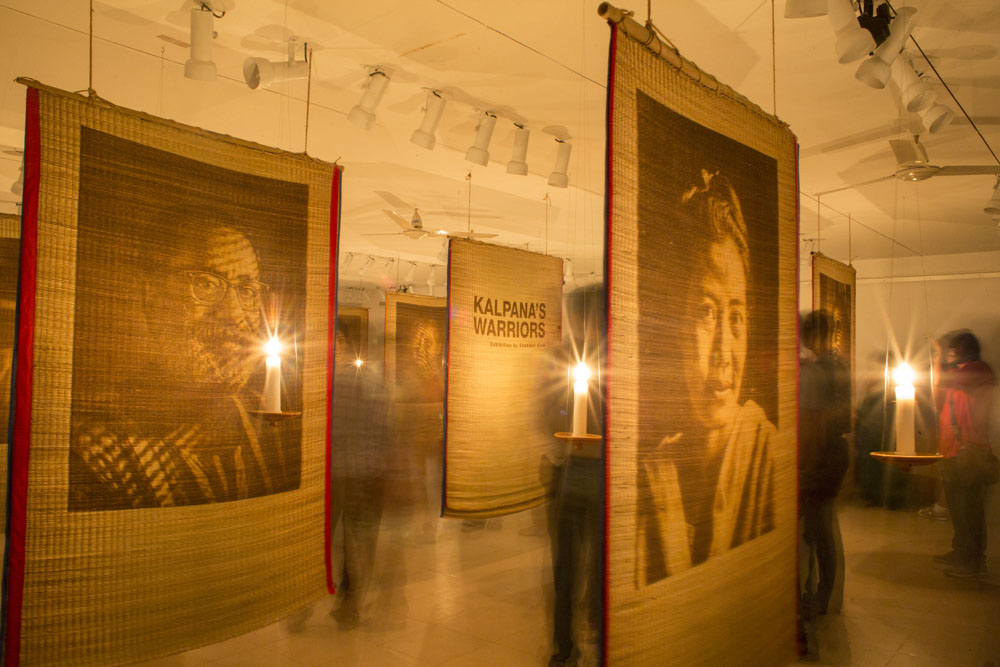
Opening of #kalpanaswarriors at #Drik gallery #dhaka #dhanmondi #photography #bangladesh #cht #rights A photo posted by Shahidul Alam (@shahidul001) on
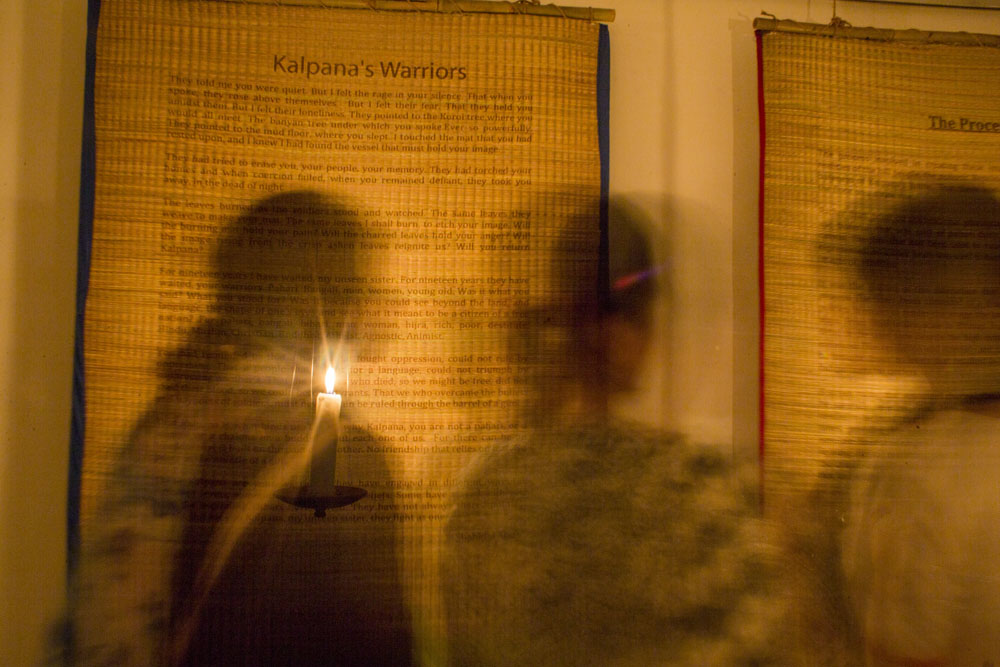
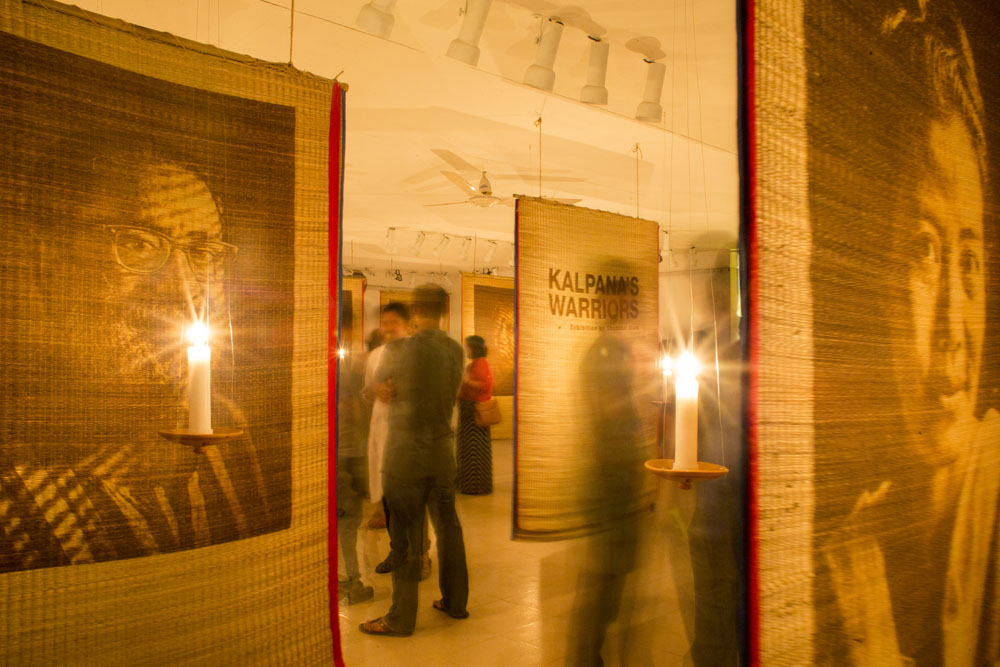
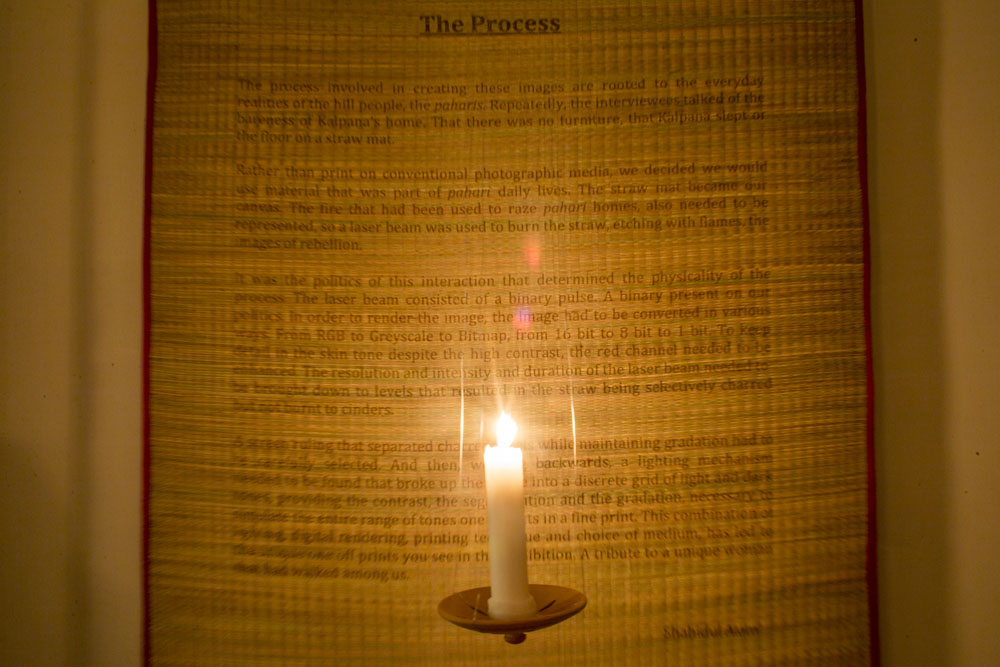
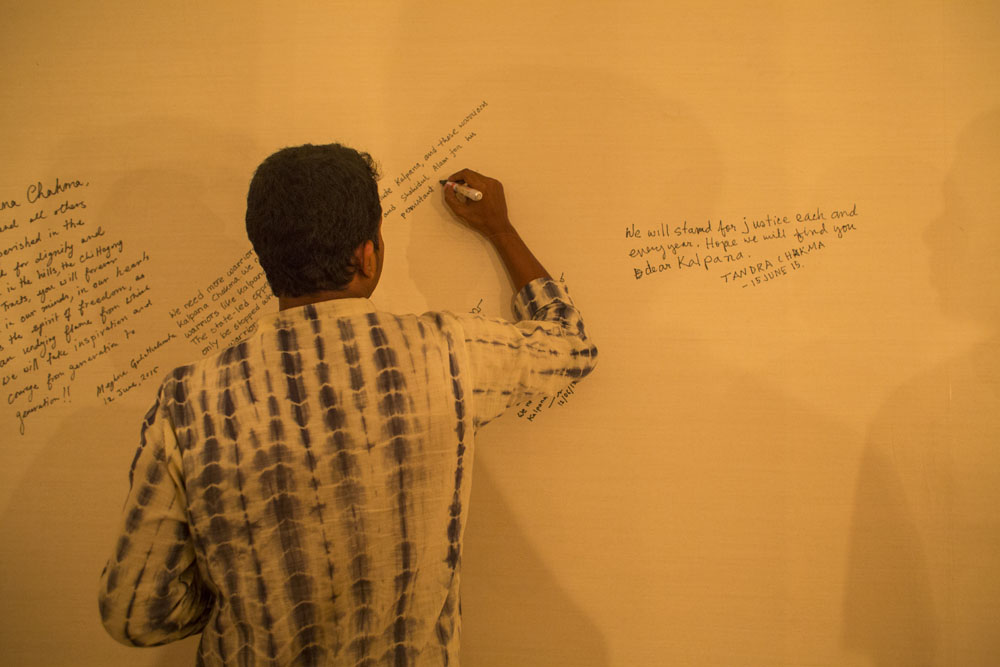
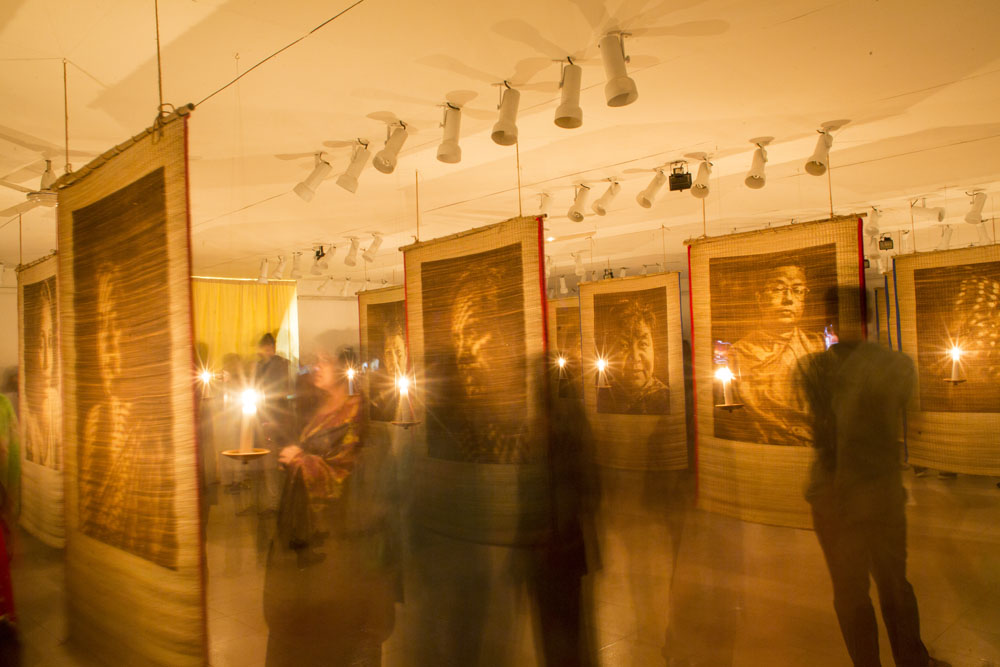
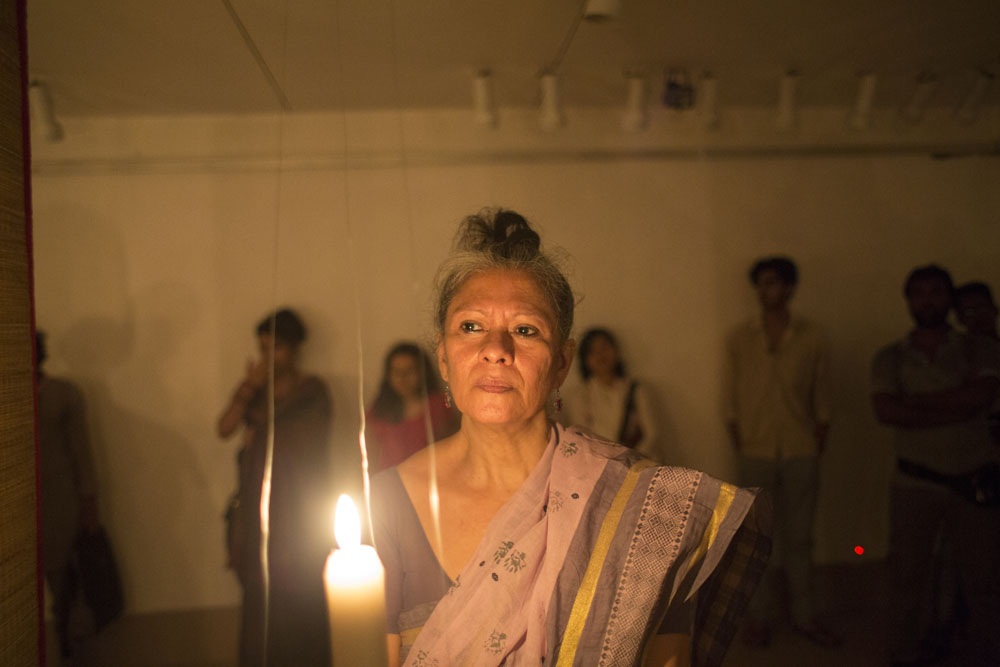
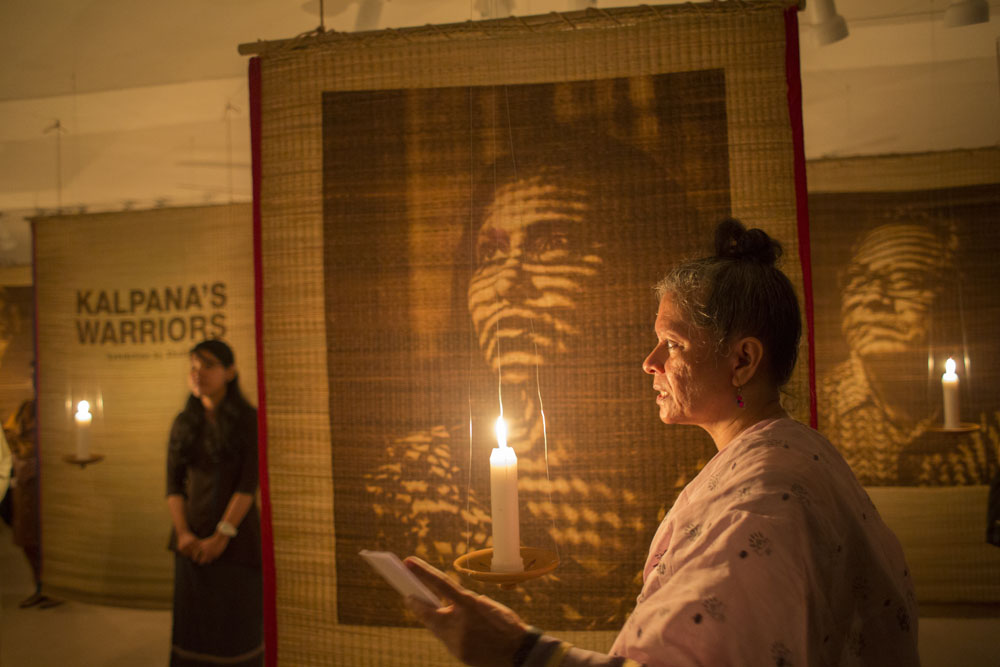
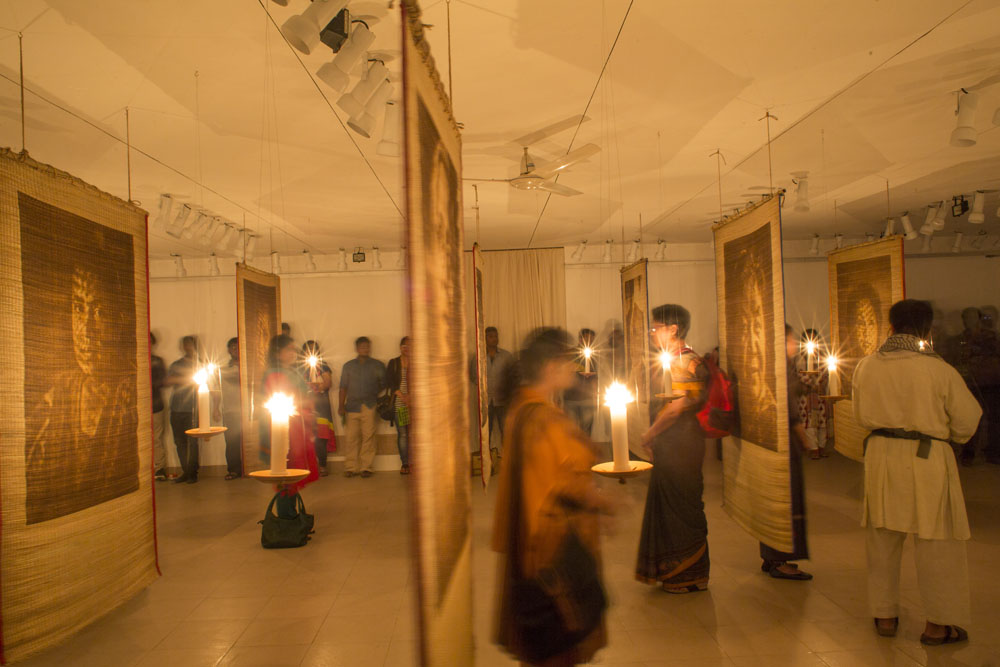
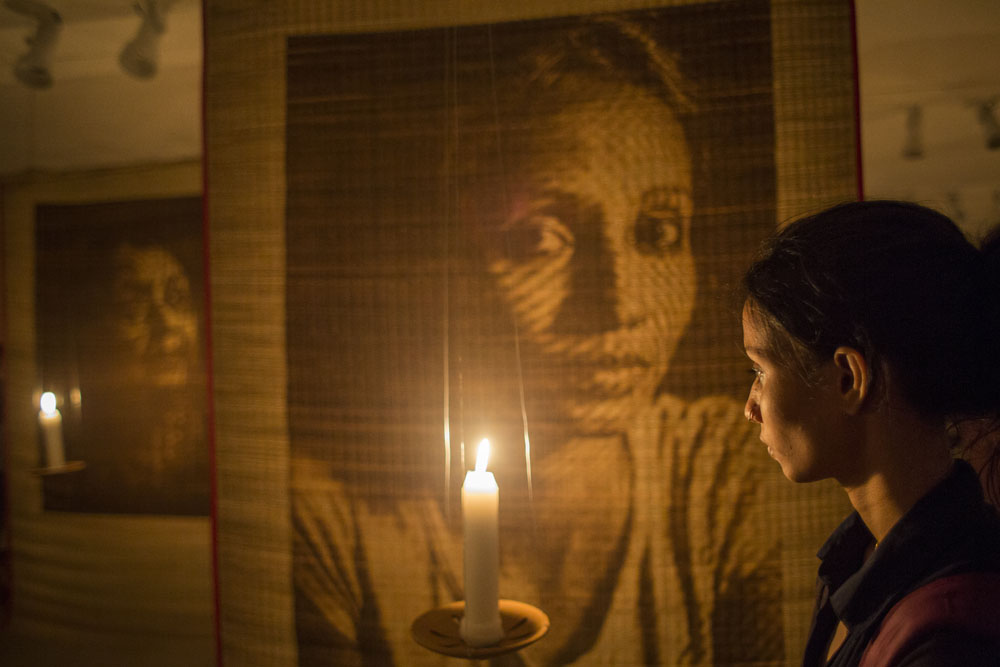
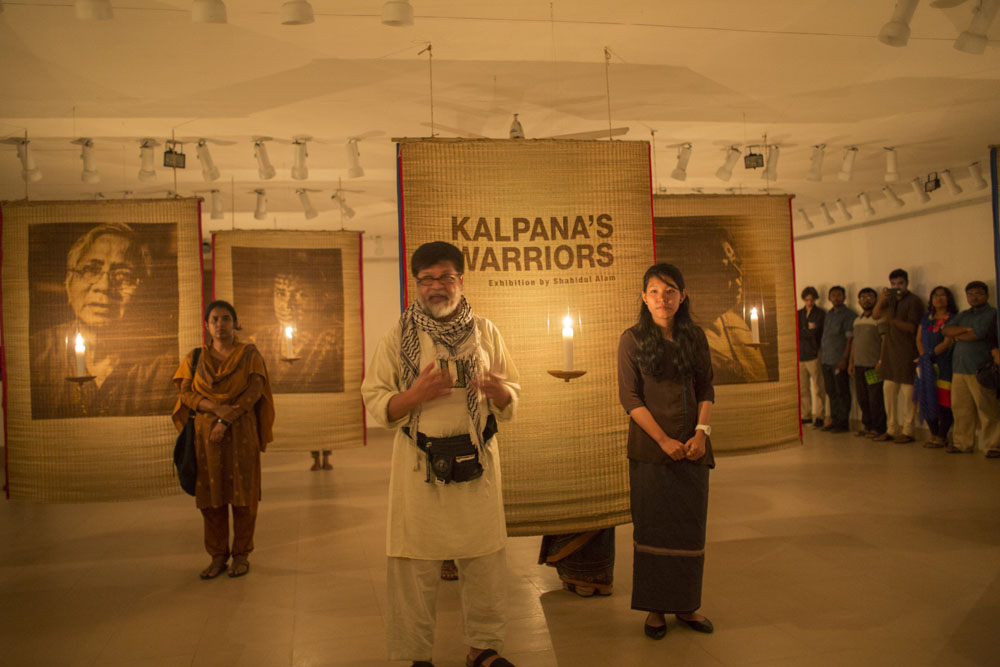
Kalpana's Warriors
Remarkable: Noam Chomsky
Absolutely stunning: Jess Worth. New Internationalist Magazine (Oxford)
They told me you were quiet. But I felt the rage in your silence. That when you spoke, they rose above themselves. But I felt their fear. That they held you amidst them. But I felt their loneliness. They pointed to the Koroi tree where you would all meet. The banyan tree under which you spoke. Ever so powerfully. They pointed to the mud floor, where you slept. I touched the mat that you had rested upon, and I knew I had found the vessel that must hold your image.
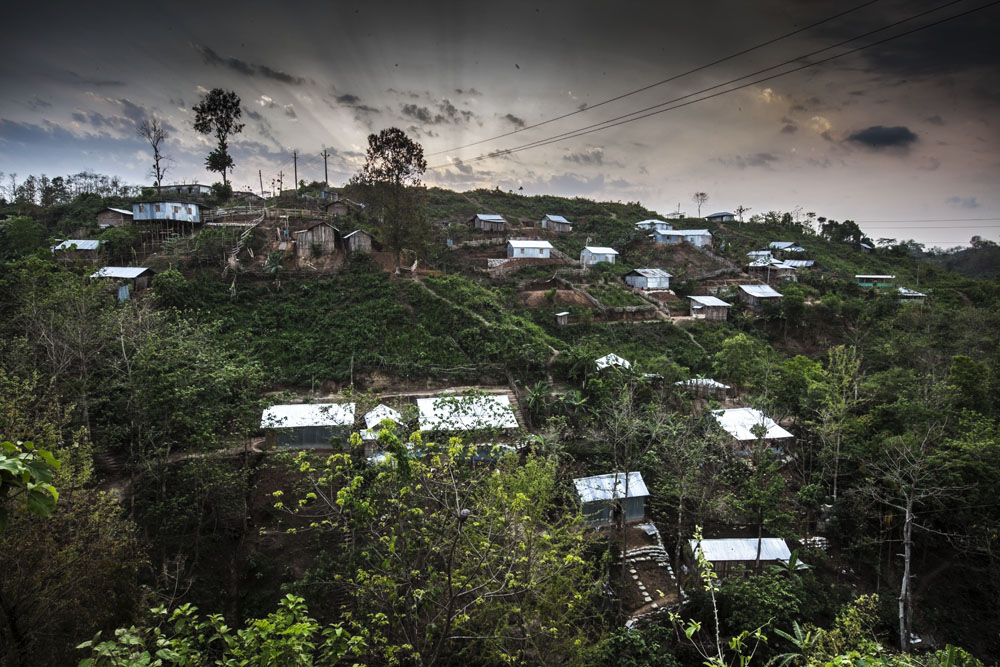
They had tried to erase you, your people, your memory. They had torched your homes and when coercion failed, when you remained defiant, they took you away, in the dead of night.

The leaves burned as the soldiers stood and watched. The same leaves they weave to make your mat. The same leaves I shall burn, to etch your image. Will the burning mat hold your pain? Will the charred leaves hold your anger? Will the image rising from the crisp ashen leaves reignite us? Will you return Kalpana?
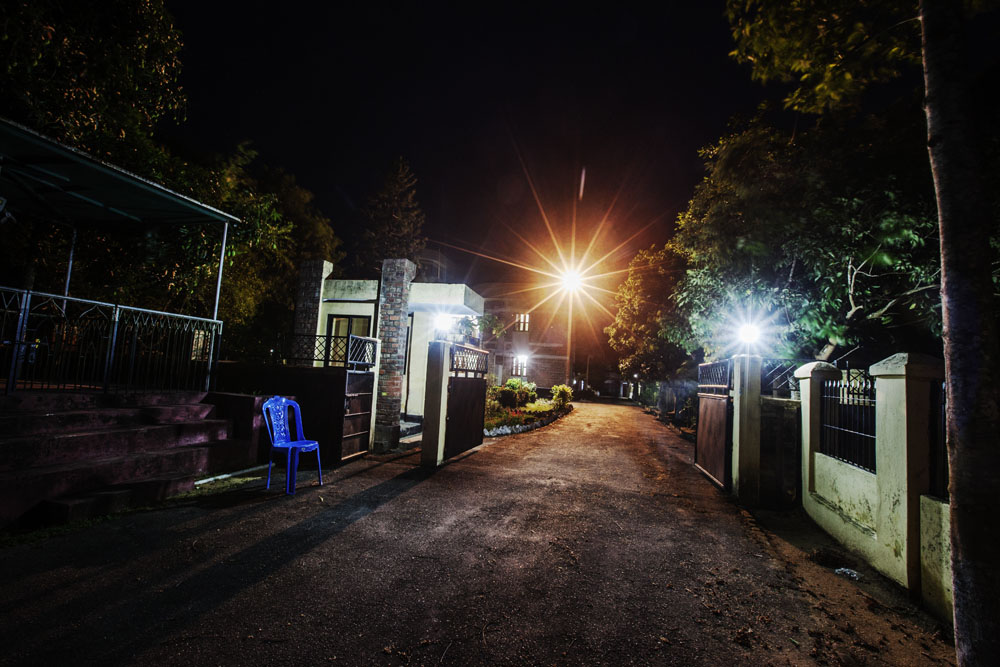
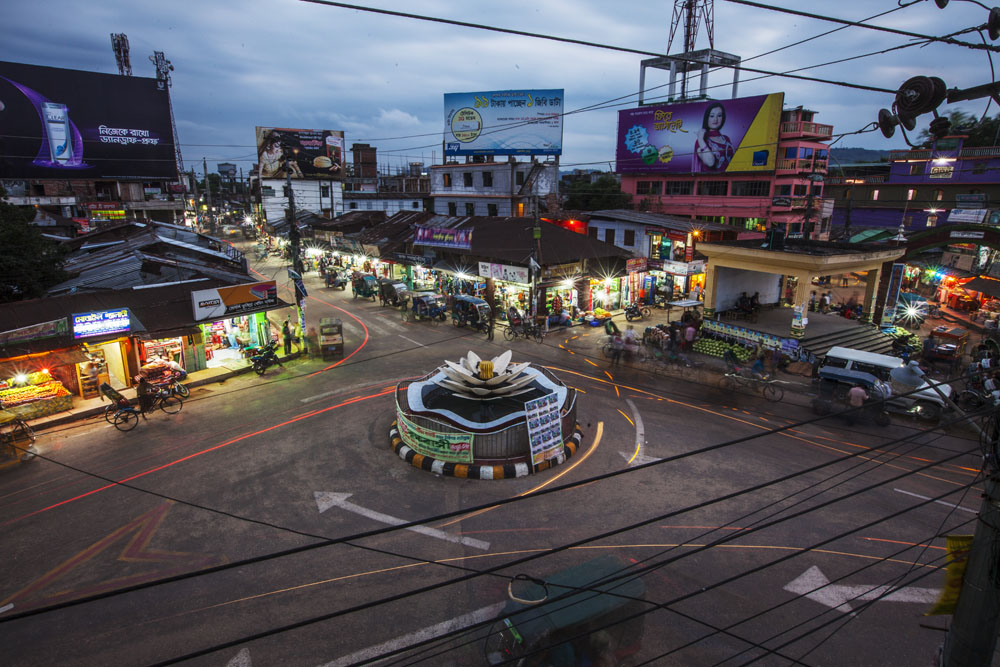
For nineteen years I have waited, my unseen sister. For nineteen years they have waited, your warriors. Pahari, Bangali, men, women, young old. Was it what you said? What you stood for? Was it because you could see beyond the land, and language, the shape of one?s eyes and see what it meant to be a citizen of a free nation? For pahari, bangali, bihari, man, woman, hijra, rich, poor, destitute, Hindu, Muslim, Christian, Buddhist, Atheist, Agnostic, Animist.
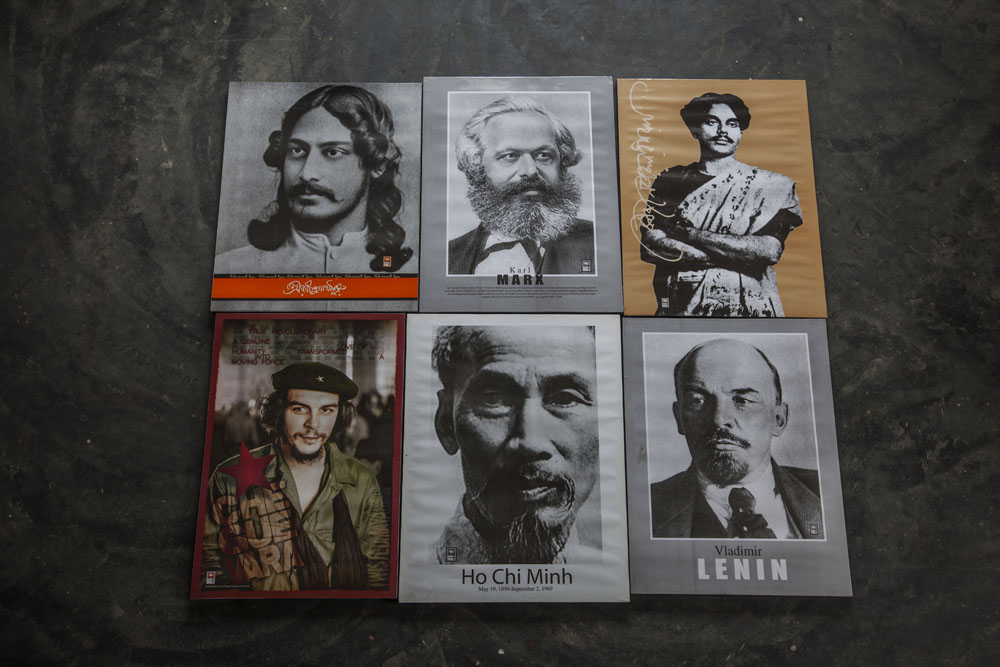
You had reminded us that a nation that fought oppression, could not rule by oppressing. That a people that fought for a language, could not triumph by suppressing another?s. That the martyrs who died, so we might be free, did not shed their blood, so we could become tyrants. That we who overcame the bullets and bayonets of soldiers, must never again be ruled through the barrel of a gun.
That Kalpana is what binds us. That is why Kalpana, you are not a pahari, or a woman or a chakma or a buddhist, but each one of us. For there can be no freedom that is built on the pain of the other. No friendship that relies on fear. No peace at the muzzle of a gun.
These Kalpana are your warriors. They have engaged in different ways, at different levels, sometimes with different beliefs. Some have stayed with you from the beginning. Others have drifted. They have not always shared political beliefs. But for you Kalpana, my unseen sister, they fight as one.
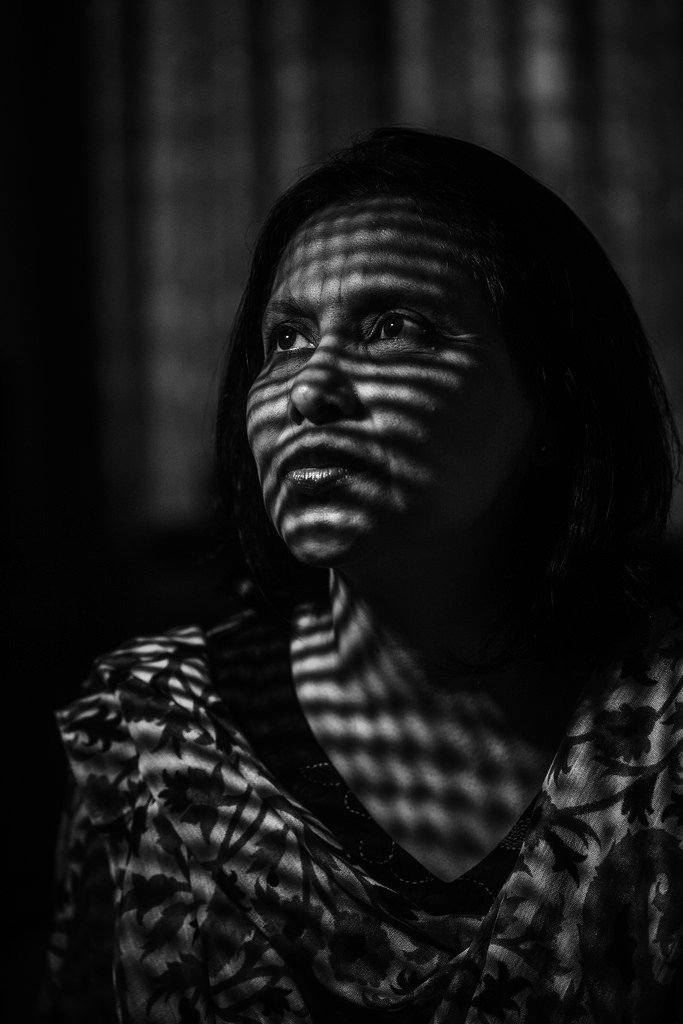
The Process
The process involved in creating these images are rooted to the everyday realities of the hill people, the paharis. Repeatedly, the interviewees talked of the bareness of Kalpana?s home. That there was no furniture, that Kalpana slept on the floor on a straw mat.
Sadia Marium making prints for my upcoming show on Kalpana Chakma #justiceforkalpana #eavig #CHT #military #bangladesh #rights #photography
A photo posted by Shahidul Alam (@shahidul001) on
Rather than print on conventional photographic media, we decided we would use material that was part of pahari daily lives. The straw mat became our canvas. The fire that had been used to raze pahari homes, also needed to be represented, so a laser beam was used to burn the straw, etching with flames, the images of rebellion.
It was the politics of this interaction that determined the physicality of the process. The laser beam consisted of a binary pulse. A binary present on our politics. In order to render the image, the image had to be converted in various ways. From RGB to Greyscale to Bitmap, from 16 bit to 8 bit to 1 bit. To keep detail in the skin tone despite the high contrast, the red channel needed to be enhanced. The Resolution and intensity and duration of the laser beam needed to be brought down to levels that resulted in the straw being selectively charred but not burnt to cinders.
A screen ruling that separated charred pixels while maintaining gradation had to be carefully selected. And then, working backwards, a lighting mechanism needed to be found that broke up the image into a discrete grid of light and dark tones, providing the contrast, the segmentation and the gradation, necessary to simulate the entire range of tones one expects in a fine print. This combination of lighting, digital rendering, printing technique and choice of medium, has led to the unique one off prints you see in this exhibition. A tribute to a unique woman that had walked among us.
Majority World exhibition in Rome: Justice in Focus
| IDLO Photo Exhibition in Rome Farnesina Porte Aperte 2015 22 – 29 May 2015 |
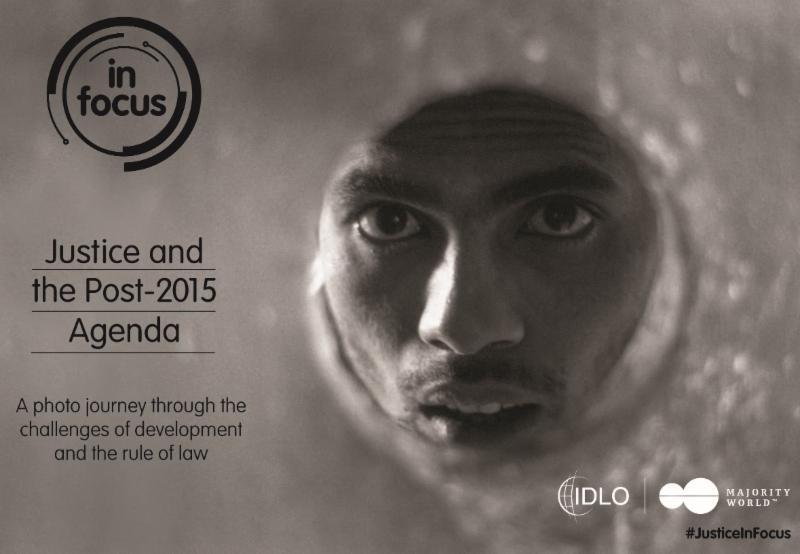
| IDLO’s photo exhibition “In Focus: Justice and the Post-2015 Agenda” will form part of this year’s initiative by the Italian Ministry of Foreign Affairs and International Cooperation to open its doors to the general public. From 22 until 29 May 2015, visitors will be able to participate in “Farnesina Porte Aperte” and view the exhibition during guided tours of the building. The Farnesina’s art collection is internationally recognized, and IDLO is proud to have been chosen to exhibit alongside this. |
The photographs were also featured by The Guardian.
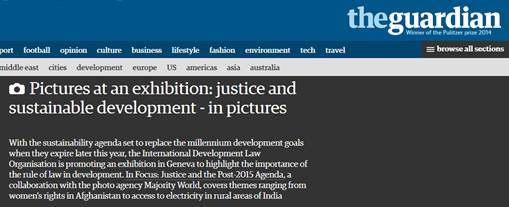
| Curated by IDLO and the photo agency Majority World, the exhibition focuses on the challenges of development and the rule of law. From gender equality and indigenous rights to energy poverty and land tenure, it presents the rule of law as lived experience. The pictures vividly explore the human side of the rule of law and its importance in everyday life. ?In Focus: Justice and the Post-2015 Agenda? illustrates these themes through 32 images – taken by photographers from Afghanistan, Bangladesh, Brazil, India and Kenya – ranging from the Amazonian settlement of Colniza, Brazil, where rule of law measures have reversed illegal logging and deforestation, to the energy-starved metropolis of Kibera, Africa?s largest slum. To sign up for a guided tour, please visit the Ministry of Foreign Affairs and International Cooperation?s Farnesina Porte Aperte website and choose the ?art route?, currently available from Monday 25 until Wednesday 27 May. Before traveling to Rome, the exhibition was shown at the Palais des Nations in Geneva, to coincide with the 28th session of the United Nations Human Rights Council. Over the coming months, it will be shown in Milan, New York, Washington and The Hague, and will return to Rome for an exclusive viewing in November. |
| For more information, please read this article in Italy’s Corriere della Sera,?visit theIDLO mini-site and watch video interviews?with the photographers. |

